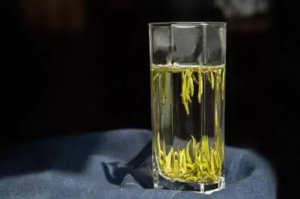Wuyi rock oolong tea is an umbrella name of the kind of oolong tea that comes from the Wuyi Mountains in Fujian Province, China. It belongs to semi-fermented oolong tea, which is between green tea and black tea. Grown in the mineral-rich soil beneath the towering cliffs of the Wuyi Mountains, Wuyi rock oolong tea is called “Yancha” in Chinese, where yan means rock and cha means tea. Compared to other types of green oolong teas from southern Fujian and Taiwan, which are light and fragrant, Wuyi rock oolong tea has an intensely rich and complex flavour, and darker and smokier color.
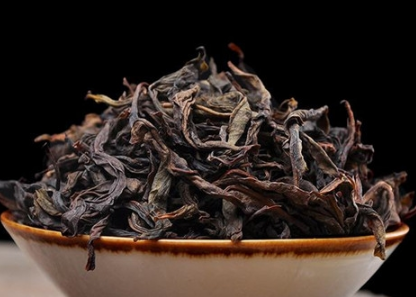
History
Wuyi rock oolong tea is originated during 16th century of Ming Dynasty. Before its creation, for hundreds of years, the Chinese liked to drink compressed tea in the form of tea cakes which was cultivated and produced in Fujian tea gardens. However, the production of tea cakes was becoming too expensive since it required a lot of labor. As a result, the Emperor of Ming Dynasty requested people to drink the new form of loose tea leaves.
The request caused a significant collapse of the well-established tea industry of Fujian and consequently smaller tea farms started popping up higher up in the Wuyi Mountains. These farms were mostly owned by Buddhist and Taoist monks who in turn discovered that letting the tea lightly oxidize before firing it could creat a new, darker, flavorful type of tea and they called it “oolong” (means “Wulong” in Chinese).
Wuyi Mountain
The geology of Wuyi Mountain belongs to the Cretaceous Wuyi layer, where the lower part is quartz porphyry, and the middle part is conglomerate, red sandstone, shale, tuff and volcanic conglomerate. The vast majority of volcano conglomerate, red sandstone and shale provide suitable soil for the rock tea to grow.
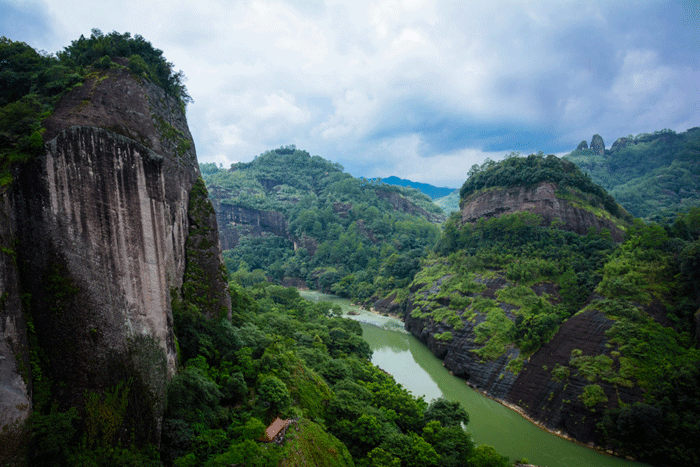
The Wuyishan National Park, located in Wuyi Mountain, is one of China’s World Heritage Sites, and an ideal environment for growing tea. The area is protected by the vast wall of mountains, while strict laws limit the effects of modern civilisation. The climate is humid and misty, with high rainfall. The annual average temperature is at 18~18.5 °C, the annual rainfall is about 2000mm, and the annual average humidity is about 80%. Pollution is kept very low by means of an air quality monitoring system and controlled access to certain areas. As a result, Wuyi Mountain is a sanctuary of rich biodiversity, supporting thousands of plant and animal species. Tea has been grown in the Wuyi Mountains since the 11th century. Since then, the production of Wuyi tea has evolved, becoming increasingly complicated and meticulous.
Rock oolong tea of good quality should come from higher altitudes where there is a rockier terrain. There the tea bushes are considered to be healthier, and the air is less polluted. Harvesting tea from such elevations can often be a complicated process. Furthermore, the processing that this tea undergoes is a unique craft that takes time to master.
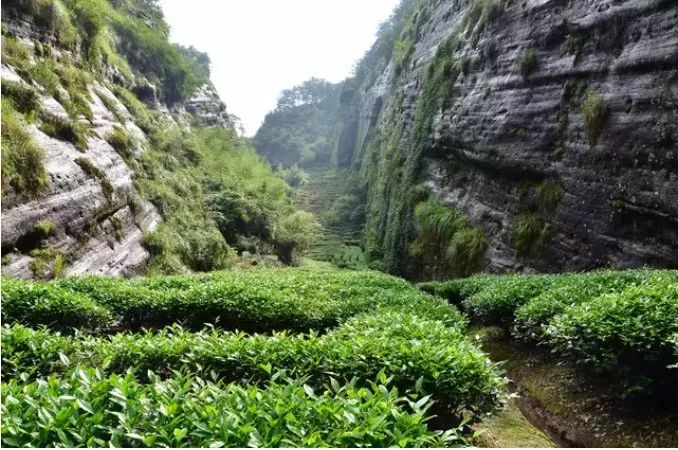
Yan Yun
Rock oolong tea got its name not only because it grows in the rocky mountainous area, but also because it inherits an unmistakeable “rocky” taste, thanks to the soil which is known to be rich in minerals. It often has a pronounced, long-lasting roasted taste, as well as a distinct mineral taste, which is often described as “Yan Yun”, the cliff rhyme.
Yan Yun is described by the mouthwatering sensation one gets after sipping the tea. The rock rhyme enters us, invites us to drink more of the tea and to absorb all the nutrient it possesses. The roasted qualities of rock oolong tea alone should not be the main components. A high-quality rock oolong tea is in perfect balance with other notes such as chocolate, floral, tobacco and caramel. A perfect cup of rock oolong tea is when the mineral, roasted side is in perfect balance with the sweet, floral side. The liquid should be a beautiful golden color and not too dark, which can signify an overly roasted tea. In sum, Yan yun is a balanced and musical sense to the tea. It is generally described as consisting of Xiang, Qing, Gan, and Huo. Xiang: aroma, pure, orchid, clear, and distinct; Qing: lasting, sweet aftertaste; Gan: sweet and mellow; Huo: a liveliness of the tea that is, in a sense, spiritual.
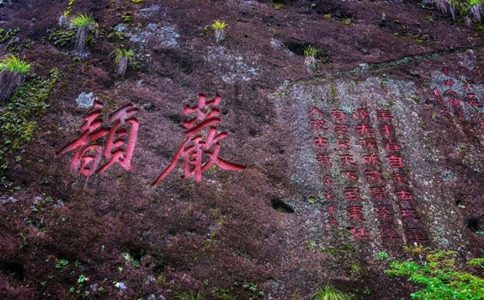
Benefit
There’re many health benefits of oolong that we can experience if we start to drink it:
1. Boosts your metabolism, causing weight loss.
Oolong tea helps you burn fat faster by raising your metabolism for up to two hours after drinking it. Oolong also contains polyphenols that are able to block enzymes that build fat. This means you can lose weight with oolong tea, so long as you don’t load it with refined sugar and artificial sweeteners. If your tastes lean towards sweet tea, consider using a small amount of raw honey, maple syrup, stevia or agave syrup—all of which are sugars low on the glycemic index.
2. Lowers cholesterol
Oolong is known to reduce cholesterol levels and promote heart health. Because oolong tea is semi-oxidized, it produces a perfectly sized polyphenol molecule that is able to activate the enzyme lipase, which is known to dissolve body fat.
3. Increases mental alertness
This healing hot cuppa is known to revitalize your mental alertness and performance, naturally, because it contains caffeine. Be careful if you are sensitive to caffeine and limit your consumption to one lightly steeped cup a day or indulge a few times a week.
4. Aids digestion
Oolong can help aid digestion for those not sensitive to caffeine. The tea alkalizes the digestive tract, reducing inflammation in those with acid reflux and ulcer problems. Because it is mildly antiseptic, oolong tea can clear bad bacteria from your belly. Its calm, smooth flavor can soothe the stomach when consumed hot.
5. Promotes healthy hair
Due to its high level of antioxidants, oolong tea can prevent hair loss if you make a tea rinse out of the leaves. Not only that, but your hair will be thicker and shinier. Oolong softens and adds lustre to your hair.
6. Betters your skin condition
Eczema often occurs in conjunction with allergies or sensitivities. Oolong tea is able to suppress those allergic reactions because it combats free radicals, which is a healing property of an antioxidant. Also, the antioxidants found in oolong are essential for vibrant, youthful skin. Drinking oolong can greatly slow down the aging process, so it’s a great anti-aging tool.
7. Stabilizes blood sugar
When you have type 2 diabetes, your blood glucose levels are elevated. Studies have shown that those suffering from diabetes could benefit from drinking oolong which, in studies, has decreased blood glucose to a healthy level. The antioxidants in oolong, which comes from polyphenols, does wonders for metabolizing sugar.
8. Prevents tooth decay
Both oolong and green tea protect teeth from acid produced by certain bacteria. The production of acid and the growth of bacteria are both inhibited by oolong tea, which means it is effective in preventing tooth decay and build-up plaque.
9. Prevents osteoporosis and forms strong bones
Oolong can protect your bones and prevent osteoporosis. Those who consistently drink oolong tea are less likely to lose their bone mineral density, helping retain minerals from healthy foods consumed. It has been discovered that oolong contains magnesium and calcium in its leaves.
10. Strengthens the immune system
Known for its anti-cancer properties, oolong tea assists in maintaining a healthy immune system. The antioxidant flavonoids found in the tea prevent cellular damage. The production of anti-bacterial proteins is much higher in those who drink oolong tea, indicating a strong immune response when fighting infection.
Brewing and Tasting
When brewing Wuyi oolong rock tea, it’s worth using a fairly large amount of tea and enjoying many short infusions.
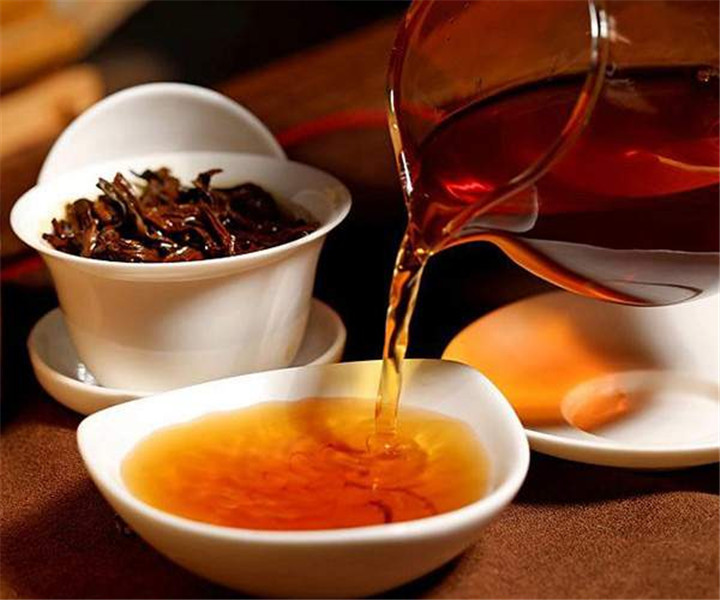
Regular Brewing
To brew rock oolong tea in a regular teapot, use 5 grams of tea (about 3 teaspoons) per 150ml of near-boiling water. The first step is to preheat the tea-ware and rinse the tea, which is used to clean any dust from the leaves. Just add hot water to your pot, pour it straight out into your cups, then discard it. The rinse will release the aroma from the tea leaves, which should be enjoyed before continuing. Next, refill your teapot and infuse for about one minute. With each subsequent infusion, increase the length by about ten seconds. The tea can be infused up to ten times.
Gongfu Brewing
Wuyi rock oolong tea is an old favourite for gongfu tea. If you have a small Yixing Zisha teapot or a Gaiwan, now is the time to use it. Use about 7 grams of tea (about 4 teaspoons) per 100ml. Follow the steps above, but reduce the brewing time to 10 or 20 seconds, adding a few seconds for each additional infusion. Gongfu brewing really brings out the best in rock tea.



